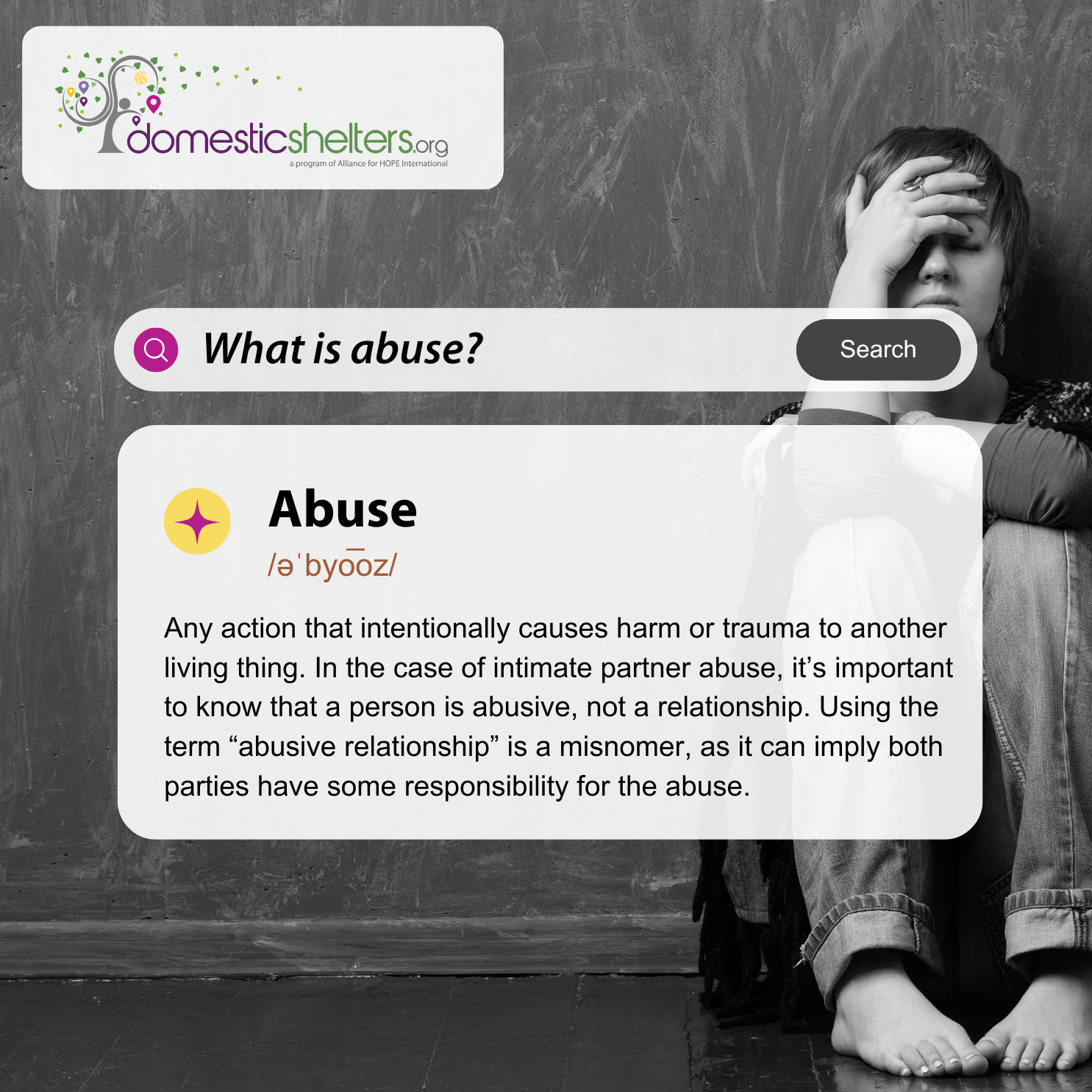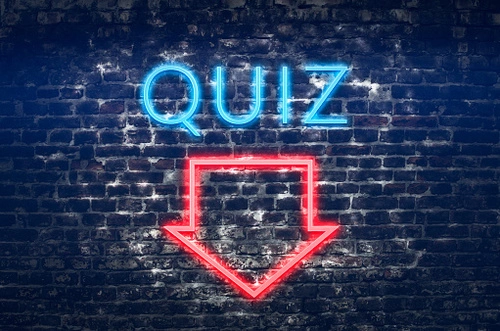1. Select a discrete app icon.

notes
A Glossary of Domestic Violence Terms
Speaking out against domestic violence means learning its language
- May 15, 2024

This piece was originally published in 2015. It was updated in 2024.
Intimate partner violence is far more complex than many people realize. Abusers can spin a dizzying web of power and control rooted not only in physical violence and intimidation, but also verbal and psychological abuse, financial control, reproductive and sexual coercion, gaslighting and so much more. These tactics are why many survivors find themselves trapped for far too long before they realize what’s going on.
Escaping or avoiding domestic violence first means understanding the varied facets of abuse and the tactics abusers use to control. Below are many of the terms and phrases used to describe the components of intimate partner abuse. We encourage everyone to learn them—even if you never get involved with an abusive partner, it’s likely you’ll know someone who does.
Abuse: Any action that intentionally causes harm or trauma to another living thing. In the case of intimate partner abuse, it’s important to know that a person is abusive, not a relationship. Using the term “abusive relationship” is a misnomer, as it can imply both parties have some responsibility for the abuse. The correct way to define it is to say a person can be in a relationship with an abuser. Read more about why it’s important to use the right terms here.
Adverse Childhood Experiences (ACEs): Events that occur during childhood, between birth to age 17, that likely cause trauma. Studies have shown that the more ACEs someone experiences, the higher the risk of chronic health problems as an adult. ACEs also increase the risk that an individual will experience domestic violence or be a perpetrator of domestic violence in adulthood. You can learn your ACE score here.
Advocate: In the realm of domestic violence, this is a person who supports survivors, helps connect them with information and resources, and can be an empathetic presence for them in their journey to safety, including in court. Advocates are found on the other end of shelter helplines as well as within Family Justice Centers, social services, the military and the court system.

Battered woman: In the 1970s, when the social movement to combat domestic violence started in earnest, survivors of abuse were often referred to as “battered” in conjunction with “battered woman syndrome” (see below). The phrase is largely outdated now, replaced with “survivor” in many instances, though some shelters are still referred to as “battered women’s shelters.”
Battered woman syndrome: Originally introduced in the 1970s by psychologist Lenore Walker, this phrase was used to explain common experiences and behaviors of women who were abused by their intimate partners, similar to PTSD. It was used as a legal defense by women who fought back against or killed their abusive partners. It isn’t used as much today, as advocates say its definition is limited and can stigmatize survivors.
Child abuse: Not adequately caring for a child that results in physical, emotional or sexual harm, or exploitation. Studies show that it is highly likely that domestic violence and child abuse will occur simultaneously. Anywhere from 30 percent to 60 percent of perpetrators of partner abuse also abuse children in the household.
Child custody: Referring to who has shared children living with a parent after a separation or divorce (physical custody) and who can make decisions for a child, usually regarding school and medical choices (legal custody). Custody is often a point of contention after domestic abuse, with some abusers utilizing post-separation legal abuse to continue their torment of a protective parent.
Choking: The term often mistakenly used to describe strangulation (see below). Choking technically refers to an item lodged in one’s airway that restricts breathing, not the act of someone putting their hands around another’s neck.
Childhood domestic violence (CDV): A term often used to describe the effects of children who grow up witnessing and/or are direct victims of domestic abuse by a parent’s spouse or partner. CDV can result in lifelong mental and physical health consequences if there is not adequate intervention.
Coercive control: Any pattern of behavior an abuser uses to dominate their partner in all areas of their life, limiting their freedom. This can include physical violence, but often, coercive control is more subtle and relates to things like isolation, stalking, gaslighting and intimidation. It is present in almost all cases of domestic abuse.
Cottage industry: In relation to domestic violence, this term typically refers to a small sect of professionals who work together to maliciously skew things, such as judicial rulings, in their favor.
Cyberstalking: The misuse of technology to harass, stalk or threaten an individual, also referred to as cyberbullying or cyberharassment. All ages and genders can be targeted but young people are especially vulnerable through social media channels that cater to them.
DARVO: An acronym that refers to three steps an abusive partner takes to avoid responsibility for abuse – deny, attack, reverse victim and offender. DARVO may also be used by law enforcement or others to redirect blame to a victim for the abuse they’ve been subjected to.
Dating violence: This refers to abuse that happens between two people who are dating. The most common age in which intimate partner abuse first occurs is between 18 and 24, with the next most common age group being 11 to 17. It’s important both teens and parents learn the warning signs of teen dating abuse.
Domestic abuse/domestic violence: A pattern of repeated behavior in a relationship used to gain or maintain power and control over a partner.
Domestic Violence Awareness Month (DVAM): Observed annually in October, this awareness campaign grew out of the battered women’s movement of the 1960s and ’70s. It was first officially observed in 1987.
Elder abuse: The intentional or negligent mistreatment of an adult over age 60. It can include physical, sexual, emotional or psychological abuse, as well as neglect, abandonment or the illegal use of an elder’s finances for someone else’s gain.
Emotional abuse: Using a victim’s emotions or manipulating their mental state in order to control them is referred to as emotional or psychological abuse. The abuser tries to tear down a victim’s self-esteem through mind games, insults, humiliation, or attempting to convince the victim he or she is mentally unstable or to blame for the abuse. This can also be known as verbal abuse.
Family Justice Centers: A place where survivors of domestic violence, sexual assault, child abuse and human trafficking can access a multitude of services in one centralized location, such as counseling, shelter, legal or law enforcement support, parenting assistance and basic needs like clothing. Their goal is to reduce the number of places survivors need to go to access services.
Financial abuse: When an abuser uses finances to exert power and control over a victim. This may include stealing a partner’s money, making a survivor beg for money, giving a survivor an allowance, opening credit cards in the survivor’s name in order to ruin their credit, preventing the survivor from accessing bank accounts, not allowing the survivor to get a job, forcing a survivor to work or failing to pay child support and expenses during a custody dispute.
Gaslighting: A tactic of abusers in which they use manipulation to create doubt in a survivor’s mind that the survivor can trust their own memories, instincts or beliefs. The name comes from a 1930s play called “Gas Light” in which the main character attempts to drive his wife crazy by dimming the lights in their home, which were powered by gas, and then denies the lights are changing.
Grooming: A predatory tactic of abusers meant to elicit a strong emotional bond with a potential victim, often a young or underage individual. The abuser may start with an abundance of attention, care, flattery and romance in order to get the victim to trust them before the abuser becomes controlling and potentially dangerous.
Hope Score: A measurement used by researchers to determine an individual’s feelings of hope, particularly after trauma. Originally developed in the early ‘90s by psychologist C.R. “Rick” Synder, PhD, a professor out of the University of Kansas.
Human trafficking: The modern-day trade of humans for sexual slavery, forced labor, or exploitation. In the realm of domestic violence and abuse, young victims can be groomed by a predator to believe they are in a relationship with that person, only to then be used for sexual exploitation, forced sexual slavery or forced labor as a means of control and profit.
Intimate partner violence: This is another term for domestic violence, sometimes also referred to as domestic abuse. While domestic violence typically refers to abuse happening between two people in a relationship, including a spouse and partner, parent and child, siblings, etc., intimate partner violence refers more specifically to abuse by a spouse or ex-spouse, or a dating partner or ex-dating partner. Intimate partner violence does not require sexual intimacy to occur.
Isolation: In domestic violence, isolation is a common and typically early tactic of abusers to keep a survivor under their control by separating them from support persons, such as friends and family, who may notice indicators of abuse. This could mean convincing a survivor to unfriend individuals close to them, not visit or speak to family, quit their job or studies, or move to a far-away or rural location.
Mandated reporter: Also known as a mandatory reporter, these individuals have a duty to report known or suspected abuse or neglect of children, elders or dependent adults to protective services. Laws vary by state as to who is mandated to report, but these individuals may include social workers, medical professionals, teachers and law enforcement officers.
OVW / Office on Violence Against Women: A federal office established in 1994 along with the Violence Against Women Act or VAWA. Though preventing violence against women is the priority of the OVW, it works to reduce violence against all genders by strengthening services across the country related to domestic violence, dating violence and sexual assault.
Parental alienation: When weaponized by an abuser, this term is used in family court to shift blame to a protective parent who is trying to keep their children away from the abusive parent. In the 1980s, a psychiatrist named Richard Gardner created a now-debunked diagnosis of “parental alienation syndrome” that was used mostly against women who were trying to keep their children safe from an abuser. However, many advocates and survivors alike argue that it is the abuser who attempts to alienate children from the protective parent and take custody as a means of power, control and torture after separation.
Perpetrator: This is the abuser, also sometimes referred to as the batterer. In court, this person is the defendant, or the person accused of a crime. The victim is the plaintiff or the person who is accusing the defendant of a crime.
Physical abuse: A pattern of repeated contact by an abuser that is violent, intimidating, controlling or nonconsensual in order to exert power and control. This can include, kicking, hitting, slapping, shoving, shaking, burning, hair-pulling, strangulation or using a weapon against a survivor.
Polyvictimization: Experiencing multiple lifetime exposures to various types of traumatic events or victimizations, such as physical abuse, sexual abuse, exposure to family violence, neglect and bullying, and usually at the hands of multiple perpetrators.
Post-separation abuse: Abusive tactics that are employed after a survivor separates from the abuser. This can include economic abuse, legal abuse, alienating the survivor from friends and family, stalking, threats, sexual abuse and child abuse or counter-parenting.
Post-traumatic stress disorder (PTSD): A mental health condition that occurs when symptoms from a traumatic event, such as abuse, endure far beyond when the trauma has ended. Symptoms can include flashbacks, anxiety attacks, insomnia, angry outbursts, feeling numb, trouble concentrating, depression, distrust of others and physical pain.
Power and control: Rooted in the perceived entitlement of abusers, this phrase is often used to describe the reason abusers choose to abuse. Many abusers implement power in the form of intimidation or withholding basic needs in order to control or force a partner to act a certain way, or do what an abuser demands.
Protective parent: The parent who is not abusive in a relationship where domestic violence or child abuse occurs. This phrase is often heard in custody or other legal hearings when describing the parent who is trying to keep their children safe from an abuser’s manipulation, control or violence.
Protection Order: Also known as a personal protection order (PPO), an order of protection (OOP), a protection from abuse order (PFA), an emergency protection order or a restraining order, this is a document issued by a circuit court, or during a criminal or civil case, and is designed to stop violent or harassing behavior, including stalking. It is free to obtain in most states and often lasts for about a week, giving a survivor time to file for a temporary or permanent restraining order.
Reproductive coercion: A tactic of abuse in which a perpetrator or abusive partner forces a victim to have sex, become pregnant or impregnate without consent. As opposed to sexual assault which uses force, reproductive coercion most often involves manipulation, including guilt trips, gaslighting, threats of violence, religious abuse or deception (i.e., lying about a vasectomy or birth control).
Safety Plan. A series of steps the survivor is planning to take to keep her and other family members, including children and/or pets, if applicable, safe from an abuser. It walks a survivor through possible scenarios and helps the survivor plan what they can do should each happen (i.e., the abuser comes to your place of employment). It also helps a survivor think through how and when it may be safest to separate from the abuser, what the survivor needs to bring with them and where the survivor can go. It can also help to organize any evidence the survivor has, which can help when filing for an order of protection or pressing charges. An advocate can help a survivor compile a safety plan, but we also offer a DIY worksheet on our site. A safety plan is updated every time there is a significant change in the survivor’s living conditions.
Science of hope: A study of how hopeful a person is in their current situation, which is useful in predicting an individual’s ability to heal from trauma. The research is believed to have originated from the work of late psychologist C.R. “Rick” Synder, PhD, a professor out of the University of Kansas in the early ‘90s who went on to develop the Hope Scale to predict a person’s level of well-being after trauma.
Sexual abuse/sexual coercion: Any unwanted sexual contact obtained by force, threats, manipulation or when a victim is unable to consent. Overwhelmingly, people who experience sexual abuse report knowing the abuser. And for half of women, that person is their intimate partner.
Short-term/transitional housing: This refers to temporary living arrangements that survivors may need after their time at an emergency shelter is up. This is often coordinated by the shelter staff or other community-run nonprofits and could include a short-term lease in an apartment, a hotel stay or an individual transitional housing unit run by a shelter. Survivors who cannot return home after a shelter stay for safety reasons should inquire with an advocate about short-term housing or transitional housing.
Spiritual/religious abuse: Within the context of domestic violence, this refers to an abuser using a victim’s religious beliefs to control them or coerce them to put up with abuse because their religion justifies it, or when an abuser prevents a victim from practicing their religion. Within a religious organization, spiritual abuse is when a religious leader shames or controls members using their position of power.
Stalking: An abusive tactic wherein a partner constantly monitors or follows their partner or ex-partner in order to keep the survivor in a continual state of unease or to garner information to use against the survivor later in a form of manipulation. This can take place in person or through digital/online means. Stalkers can also be strangers to the victim, but in most cases, a victim knows their stalker.
Strangulation: Restricting an individual’s ability to breathe by placing pressure on their throat, typically by wrapping one’s hands around the victim’s neck. Strangulation is one of the most dangerous acts of physical abuse and a leading indicator of future lethality (aka, death). It can take less than 10 seconds for a person to lose consciousness as a result of strangulation, and death can occur in just under five minutes. Strangulation as a form of abuse is also one of the leading causes of TBI or traumatic brain injury. Even if a person doesn’t lose consciousness or has no visible marks after strangulation, they should seek immediate medical attention any time their airflow is restricted for any amount of time.
Survivor. An individual being abused—physically, verbally, sexually, emotionally, psychologically or in another harmful manner—is referred to as a survivor. This person can also be called a victim, though survivor is typically thought to be a more empowering term.
Teen dating violence: Partner violence within the demographic of teens is often referred to as teen dating violence. Women between the ages of 18 and 24 are most at risk of being targeted by abusive partners, though any gender identity can be a victim of abuse. Teen dating violence is especially prevalent because young people are often new to relationships, more trusting, more impulsive and may not have learned what healthy boundaries look like and therefore more vulnerable to an abuser’s manipulation.
Trauma bonding/trauma bond: A type of attachment that one can feel toward someone who’s causing them trauma. It may include simultaneous feelings of sympathy, compassion and love, as well as confusion. It often traps a survivor with an abuser indefinitely because, while it feels like genuine feelings of compassion, it’s actually manipulation on the part of the abuser that’s causing the survivor to stay attached or leave and then return again.
Verbal abuse: An abusive tactic that involves speaking to a partner with the intent to demean, humiliate, blame or threaten them. Though an abuser may raise their voice in mean and threatening ways, verbal abuse does not always include shouting. It can also be described as emotional abuse. The difference between verbal abuse and an argument between a couple is that verbal abuse will happen continually and leave a partner feeling unsafe and uneasy, i.e., “walking on eggshells” more days than not.
Victim/victim-survivor: An alternate term for a survivor of domestic violence. “Victim” may also refer to someone who has been killed by an abuser.
Violence Against Women Act (VAWA): A piece of U.S. federal legislation specifically designed to provide protections for survivors of domestic violence, dating violence, sexual assault and stalking. The bill was authored and sponsored by future President Joe Biden as part of the Crime Bill of 1994 and signed into law the same year by President Bill Clinton. It authorized $1.6 billion over six years toward the investigation, prosecution and prevention of violent crimes against both women and men. The Act also led to the creation of the Office on Violence Against Women within the Department of Justice. It was most recently reauthorized in 2022.
Donate and change a life
Your support gives hope and help to victims of domestic violence every day.
Looking for someone to speak with? Enter your location to find phone numbers for domestic violence experts in your area.
Have a question about domestic violence? Type your question below to find answers.








